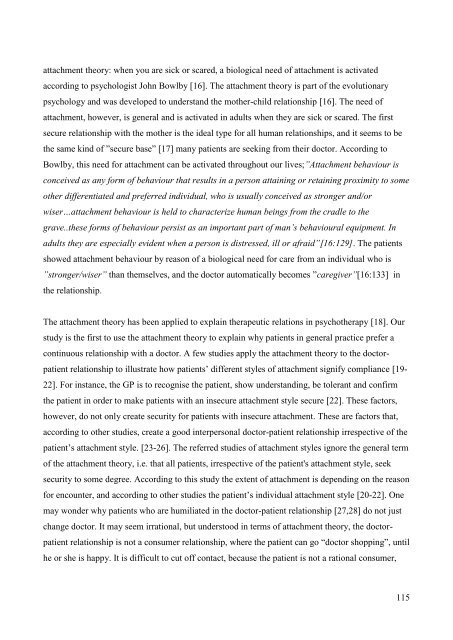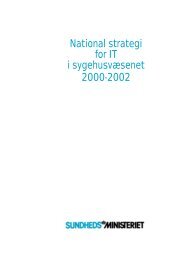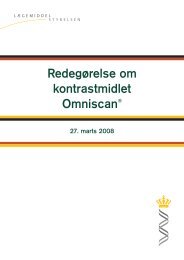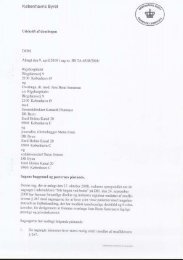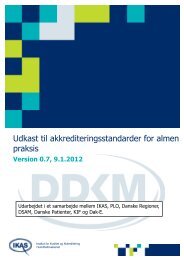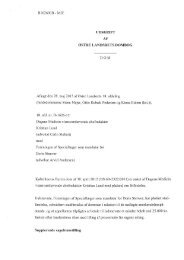Patientperspektivet på læge-patientrelationen i ... - Dagens Medicin
Patientperspektivet på læge-patientrelationen i ... - Dagens Medicin
Patientperspektivet på læge-patientrelationen i ... - Dagens Medicin
Create successful ePaper yourself
Turn your PDF publications into a flip-book with our unique Google optimized e-Paper software.
attachment theory: when you are sick or scared, a biological need of attachment is activated<br />
according to psychologist John Bowlby [16]. The attachment theory is part of the evolutionary<br />
psychology and was developed to understand the mother-child relationship [16]. The need of<br />
attachment, however, is general and is activated in adults when they are sick or scared. The first<br />
secure relationship with the mother is the ideal type for all human relationships, and it seems to be<br />
the same kind of ”secure base” [17] many patients are seeking from their doctor. According to<br />
Bowlby, this need for attachment can be activated throughout our lives;”Attachment behaviour is<br />
conceived as any form of behaviour that results in a person attaining or retaining proximity to some<br />
other differentiated and preferred individual, who is usually conceived as stronger and/or<br />
wiser…attachment behaviour is held to characterize human beings from the cradle to the<br />
grave..these forms of behaviour persist as an important part of man‟s behavioural equipment. In<br />
adults they are especially evident when a person is distressed, ill or afraid”[16:129]. The patients<br />
showed attachment behaviour by reason of a biological need for care from an individual who is<br />
”stronger/wiser” than themselves, and the doctor automatically becomes ”caregiver”[16:133] in<br />
the relationship.<br />
The attachment theory has been applied to explain therapeutic relations in psychotherapy [18]. Our<br />
study is the first to use the attachment theory to explain why patients in general practice prefer a<br />
continuous relationship with a doctor. A few studies apply the attachment theory to the doctor-<br />
patient relationship to illustrate how patients‟ different styles of attachment signify compliance [19-<br />
22]. For instance, the GP is to recognise the patient, show understanding, be tolerant and confirm<br />
the patient in order to make patients with an insecure attachment style secure [22]. These factors,<br />
however, do not only create security for patients with insecure attachment. These are factors that,<br />
according to other studies, create a good interpersonal doctor-patient relationship irrespective of the<br />
patient‟s attachment style. [23-26]. The referred studies of attachment styles ignore the general term<br />
of the attachment theory, i.e. that all patients, irrespective of the patient's attachment style, seek<br />
security to some degree. According to this study the extent of attachment is depending on the reason<br />
for encounter, and according to other studies the patient‟s individual attachment style [20-22]. One<br />
may wonder why patients who are humiliated in the doctor-patient relationship [27,28] do not just<br />
change doctor. It may seem irrational, but understood in terms of attachment theory, the doctor-<br />
patient relationship is not a consumer relationship, where the patient can go “doctor shopping”, until<br />
he or she is happy. It is difficult to cut off contact, because the patient is not a rational consumer,<br />
115


